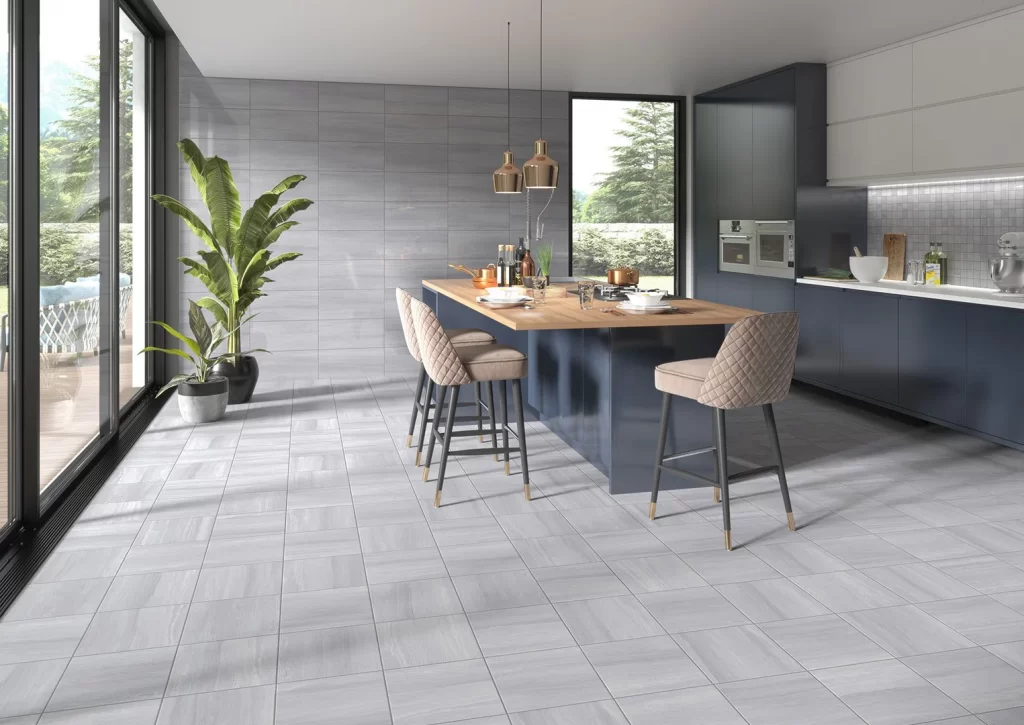Ceramic Floor Tiles
4 min read
Ceramic tile floor at home or at work is a popular choice because of the flexibility in application from walls to floors at a reasonable price. There are many different colours, structures and patterns available – with even modern printing technology making tiles that can be simulated as concrete, wood and marble!
Tile floors get dirty easily, especially those with textured surfaces, and need to be swept regularly in order to avoid looking shabby. An attachment on a vacuum cleaner is very effective at removing dust that accumulates along the edge and between tiles.
Easy to Clean
The glazed, finished surface of ceramic tile makes it easy to keep clean, as sweeping will scoop up nearly all dirt from a floor and vacuum attachments can pick up smaller detritus such as crumbs. A damp mop or microfibre cloth can then pick up the left over debris with a little bit of water or a mild cleaning product, avoiding strong chemicals which can be abrasive on glazed surfaces.
Ceramic tile does not warp when conditions are humid, but it needs to be sealed regularly to prevent dirt and moisture from seeping into its clay pores and warping its form.
As simple as it sounds, stop more of the dirt at the door by having people use door mats and by taking off your shoes when walking into a room with ceramic flooring will keep tile flooring cleaner for longer periods of time by not allowing most of its gunk onto it in the first place. If spills are quickly mopped up rather than leaving them for the weekend to mop up all at once, soap scum won’t harden and then have you plodding along day after day trying to remove it from your floor. A mix of one cup low-sudsing (that means no fragrance!) detergent and five gallons water makes a simple odour-eliminating cleaning-agent solution for discoloured or discolouring grout.
Durable
Ceramic tile is also all around your home. It is one of the best covers for every day use and bustle. Ceramic tile is waterproof and easy to clean.
Tiles are also extremely durable, standing up to decades of footfall. Which tile you choose depends on personal need: some might want glazed versions that protect the design from dirt and other contaminants, while unglazed versions such as through-body porcelain might have more of a natural look, and seen side by side with glazed alternatives might appear less likely to be damaged in the long-term.
Boasting higher density and less porosity, porcelain tiles are both stain-resistant, moisture-proof and scratch-resistant, as well as less absorbent than ceramic ones. When applied in more hygiene-sensitive spaces like kitchens, bathrooms or laundry rooms, they’re almost the best option. Get ceramics with PEI ratings of three or more for a spot frequented by heavy foot traffic.
Versatile
And ceramic tiles fit these: sometimes grey porcelain for entirely monochromatic appeal, sometimes colourful ones like blue or turquoise as an accent. Ceramic’s palette runs the gamut from a neutral grey to a more vibrant green, and, even in its greenest state, it will still work beautifully in any colour scheme. Throw it in there with other natural, wood-like elements, like hardwood flooring, travertine countertops or golden oak cabinets.
Ceramic tile comes in a variety of styles and patterns. It’s so much more than just colour varieties! Smooth and textured, glossy and unglazed; trim pieces, borders and inlays too – not to mention the different sizes to fit your room dimensions to a T, or make creative kitchen backsplashes or funky accent walls in your powder room.
Ceranic wall tile works well in an open-concept bathroom with marble-like design, made of synthetic material, typically through dry pressing or extrusion and then fired at high temperatures to be heat resistant and moisture resistant and prepared for foot traffic, they also have a natural slip resistance.
Affordable
Because ceramic tile floors are usually less expensive than other alternatives – not only aesthetically superior to natural hardwood but also more durable – some homeowners are hesitant to choose them for high traffic areas if the tile is likely to be more expensive.
Tile can be installed over most subfloors. We recommend that the existing substrate be capable of supporting tile’s weight and the grout. Tile is not recommended for areas prone to freeze/thaw cycles, or for areas susceptible to heavy moisture exposure, and may crack when strains or stresses exceed the capability of the material.
It doesn’t stain or break easily, which makes glazed ceramic a great choice for kitchens and bar areas. The textures and patterns are likewise varied – you can select porcelain with a bog-standard creation to match your drab decor, or a bold, contemporary design. You can even have sections of your floor printed to look like concrete, wood or marble. There’s almost always an option at the price point you want, and porcelain tiles are normally more expensive. Therefore, providing you’re taking decent care, both can last you decades. You’ll get a lot of use out of that splurge, so tile is a highly cost-effective and practical choice for renovation projects.


















